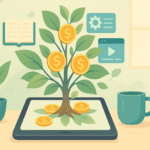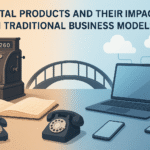Case Study: How I Made $10,000 Selling Digital Products
In today’s digital age, creating and selling digital products can be a lucrative way to generate income. Whether you’re a seasoned entrepreneur or a creative soul looking to monetize your talents, this case study on how I made $10,000 selling digital products might spark some inspiration. Let’s dive into the journey, the strategies employed, and some handy tips for your own success.
Table of Contents
1. Introduction
2. The Birth of My Digital Product Idea
3. Building the Product
4. Marketing Strategies That Worked
5. Challenges and How I Overcame Them
6. Key Takeaways
7. Conclusion
8. FAQs
Introduction
When I first decided to sell digital products, I was driven by a simple goal: financial freedom. I wanted to create something that could provide value to others while also allowing me to earn a decent income. After some research, I realized that digital products were not only scalable but also relatively low-cost to produce. With the right approach, I believed I could make it work. And I did! Here’s how I embarked on this journey.
The Birth of My Digital Product Idea
The inception of my digital product idea began with identifying a niche I was passionate about: productivity and personal development. Having struggled with time management myself, I developed a deep understanding of the challenges people face in staying productive. This led me to create a series of digital planners and e-books aimed at helping individuals manage their time effectively and achieve their personal goals.
To validate my idea, I conducted surveys and engaged with potential customers through forums and social media groups. This helped me refine my product concept and ensure there was a demand for what I wanted to offer. 🎯
Building the Product
Once I had a clear idea, I got to work on creating the digital planners and e-books. I used tools like Canva for design and Google Docs for content creation. The key was to ensure that the products were visually appealing and easy to use. Additionally, I included actionable tips and strategies that users could implement immediately.
For those considering creating digital products, remember that quality is crucial. Invest the time in crafting something that truly benefits your audience. 🌟
Marketing Strategies That Worked
Creating a great product is only half the battle; getting it in front of the right audience is the other half. Here are some marketing strategies that worked wonders for me:
1. Social Media Marketing: Platforms like Instagram and Pinterest were instrumental in showcasing my products. I regularly posted content that highlighted the benefits of my planners and e-books, using engaging visuals and catchy captions.
2. Email Marketing: Building an email list was a game-changer. I offered a freebie—a sample planner in exchange for email sign-ups, which helped me grow a list of interested potential customers. I then sent out regular newsletters with tips and promotions.
3. Collaborations and Influencers: Partnering with influencers in the productivity niche helped expand my reach. They showcased my products to their followers, providing an authentic endorsement that drove sales.
4. SEO Optimization: I optimized my product listings and blog posts with relevant keywords to improve visibility on search engines, which brought in organic traffic. 🔍
Challenges and How I Overcame Them
No journey is without its hurdles. One significant challenge was the initial slow pace of sales. To combat this, I focused on gathering customer feedback and making iterative improvements to my products. Another challenge was managing time effectively while juggling multiple responsibilities. I made use of the very planners I was selling to stay organized and productive!
Key Takeaways
Through this journey, I learned several key lessons:
1. Understand Your Audience: Knowing your target market’s needs is crucial to creating a product that resonates.
2. Consistent Marketing: Consistency in marketing efforts is vital for building brand awareness and driving sales.
3. Embrace Feedback: Customer feedback is invaluable for refining and improving your product offerings.
Conclusion
Making $10,000 from selling digital products was a thrilling milestone, but it was only the beginning. The online marketplace offers endless opportunities for those willing to put in the work. If you’re considering embarking on a similar path, remember that success is a blend of passion, strategy, and perseverance. Who knows? Your digital product could be the next big thing! 🚀
FAQs
Q1: What digital products are most profitable?
A1: E-books, online courses, and digital planners are among the most profitable digital products.
Q2: How do I start selling digital products?
A2: Start by identifying a niche, creating a high-quality product, and using platforms like Etsy, Gumroad, or your own website to sell.
Q3: Do I need technical skills to create digital products?
A3: Basic design and writing skills can be helpful, but many tools are user-friendly and don’t require extensive technical knowledge.
Q4: How can I grow my email list?
A4: Offer a valuable freebie in exchange for email sign-ups, and promote it across your social media channels and website.
Free Download!
Best Digital Product – eBooks, templates, AI tools, courses, and mor






